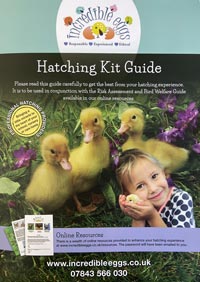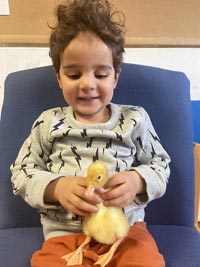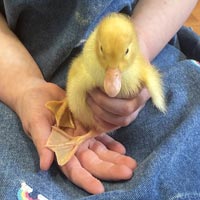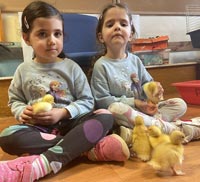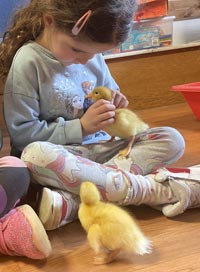
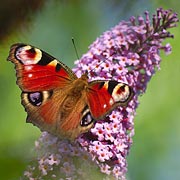 The little creatures that nature provides are some of the most wonderful, magical things that both fascinate and educate young children. Nature is a wondrous thing, when you think about it. All the little beings and characters that crawl or dart around any wildlife-friendly garden will enrich both the garden and any onlooker. What’s more exposure to nature is known to benefit children in many different ways. With that in mind, today’s guide provides ways to make any garden more wildlife-friendly. By following the suggestions, young children can get to see more of these beautiful little visitors, many of whom may even become regulars if the conditions are right.
The little creatures that nature provides are some of the most wonderful, magical things that both fascinate and educate young children. Nature is a wondrous thing, when you think about it. All the little beings and characters that crawl or dart around any wildlife-friendly garden will enrich both the garden and any onlooker. What’s more exposure to nature is known to benefit children in many different ways. With that in mind, today’s guide provides ways to make any garden more wildlife-friendly. By following the suggestions, young children can get to see more of these beautiful little visitors, many of whom may even become regulars if the conditions are right.
Attracting Mini-Beasts, Insects & Reptiles to the Garden
Mini-beasts like woodlice, centipedes, millipedes and many other bugs will love it if children leave them an undisturbed compost area to nest in. Insects and even reptiles like lizards and slow-worms may even move in. All they need is composting vegetation like rotting leaves, logs and perhaps grass cuttings that gradually break down — and they’re happy!
Hedgehog Hotels
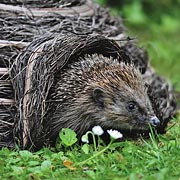 Hedgehogs also love piles of leaves, so long as they’re left undisturbed and are somewhere peaceful and safe. Therefore, a pile of them under a secluded bush or underneath a shed may prove popular with them. Children can also make hedgehog hotels — or buy commercially available ones from a garden nursery or online. It’s essential that hedgehogs are able to get into the garden in the first place, though. Therefore, there needs to be a space somewhere to get in, e.g. under a garden gate and/or under one or more parts of the fence around the garden. If there are no gaps, then there is no point in putting out a hedgehog hotel.
Hedgehogs also love piles of leaves, so long as they’re left undisturbed and are somewhere peaceful and safe. Therefore, a pile of them under a secluded bush or underneath a shed may prove popular with them. Children can also make hedgehog hotels — or buy commercially available ones from a garden nursery or online. It’s essential that hedgehogs are able to get into the garden in the first place, though. Therefore, there needs to be a space somewhere to get in, e.g. under a garden gate and/or under one or more parts of the fence around the garden. If there are no gaps, then there is no point in putting out a hedgehog hotel.
On a side note, milk is harmful to hedgehogs, so never put it out in the garden for them.
Insect Houses & Bug Hotels
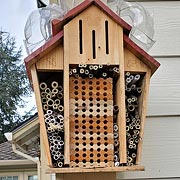 If children have no garden, simply attach an insect house (also known as a bug hotel) to any external wall. Alternatively, stand it firmly out of harm’s way, preferably somewhere peaceful, undisturbed and out of direct sun for most of the day. Simple insect houses and more complex bug hotels can be bought inexpensively online or from garden centres. They can also be home-made using chopped-up lengths of bamboo (or similar hollow sticks) bundled together with string. Children will need supervision for such an activity, of course, for safety. After a few weeks, children may notice that some of the hollow ‘tunnels’ are obstructed and this is likely to be insects, including solitary bees, ladybirds and some fancy types of solitary wasp, who have moved in or filled the hollow cores with pollen or nectar. They may seal entrances to overwinter or to protect eggs laid inside.
If children have no garden, simply attach an insect house (also known as a bug hotel) to any external wall. Alternatively, stand it firmly out of harm’s way, preferably somewhere peaceful, undisturbed and out of direct sun for most of the day. Simple insect houses and more complex bug hotels can be bought inexpensively online or from garden centres. They can also be home-made using chopped-up lengths of bamboo (or similar hollow sticks) bundled together with string. Children will need supervision for such an activity, of course, for safety. After a few weeks, children may notice that some of the hollow ‘tunnels’ are obstructed and this is likely to be insects, including solitary bees, ladybirds and some fancy types of solitary wasp, who have moved in or filled the hollow cores with pollen or nectar. They may seal entrances to overwinter or to protect eggs laid inside.
Flowers are Irresistible
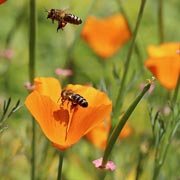 Flowers, and the nectar they provide, are irresistible to flying insects like wonderful bees, butterflies, hover flies and ladybirds. Many different flower types will attract such creatures and create a real buzz in the resulting flowerbed. We’ll write a separate post in due course about the types of flower that children can grow, perhaps from seed. Poppies are just one example to get children started, though. However, suffice it to say, if children grow any types of flowers, adorable creatures are likely to visit and bring real life to the garden.
Flowers, and the nectar they provide, are irresistible to flying insects like wonderful bees, butterflies, hover flies and ladybirds. Many different flower types will attract such creatures and create a real buzz in the resulting flowerbed. We’ll write a separate post in due course about the types of flower that children can grow, perhaps from seed. Poppies are just one example to get children started, though. However, suffice it to say, if children grow any types of flowers, adorable creatures are likely to visit and bring real life to the garden.
Waterholes for Bees, Dragonflies & Damselflies
Children can also place small, shallow dishes or jar lids of water amongst any flowers that are growing in flowerbeds. It’s important to put a ‘landing stone’ in the middle, so that visiting bees, dragonflies and damselflies have somewhere safe to land. They’ll sit at the water’s edge and sip the water, particularly on hot, sunny days.
Sugar Water for Butterflies & Moths
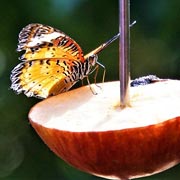 Similarly, butterflies and moths will enjoy a drink. However, in their case, they like some sugar dissolved into the water (a 50/50 mix is good, so the water may need to be warm during the preparation stage). Once cold, the sugar solution should be drizzled over pieces of ripe fruit like apples or oranges, which can then be placed into shallow dishes or speared onto vertical sticks. These can then go into the garden, balcony or window box — anywhere so long as they’re alongside any insect-attracting flowers.
Similarly, butterflies and moths will enjoy a drink. However, in their case, they like some sugar dissolved into the water (a 50/50 mix is good, so the water may need to be warm during the preparation stage). Once cold, the sugar solution should be drizzled over pieces of ripe fruit like apples or oranges, which can then be placed into shallow dishes or speared onto vertical sticks. These can then go into the garden, balcony or window box — anywhere so long as they’re alongside any insect-attracting flowers.
Attracting Birds
The main way of attracting birds to the garden (or to the house if you have no garden) is through the use of the right type of bird food. They love bird seed, fat balls and even Cheddar cheese! 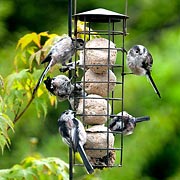 The cheese is a big hit with robins, blackbirds, pigeons, doves, sparrows and dunnocks, for example, but never use blue or mouldy cheese as it could harm them. These same bird types also love sunflower ‘hearts’, the inner kernel of sunflower seeds, which can be purchased inexpensively with the weekly shop from most supermarkets or, of course, online or from garden nurseries. ‘Robin Peanut Cakes’ by the National Trust (also available from Ocado) are also a massive hit in our own garden. Long-tailed tits, woodpeckers, starlings and nuthatches all adore such foods mentioned in this section. The seed can be sprinkled on the ground (little and often is best, so the food doesn’t go off, and somewhere safe away from hiding prey). Better still, for their safety, the bird food can be placed in bird feeders attached high up to windows, walls, sheds and fences.
The cheese is a big hit with robins, blackbirds, pigeons, doves, sparrows and dunnocks, for example, but never use blue or mouldy cheese as it could harm them. These same bird types also love sunflower ‘hearts’, the inner kernel of sunflower seeds, which can be purchased inexpensively with the weekly shop from most supermarkets or, of course, online or from garden nurseries. ‘Robin Peanut Cakes’ by the National Trust (also available from Ocado) are also a massive hit in our own garden. Long-tailed tits, woodpeckers, starlings and nuthatches all adore such foods mentioned in this section. The seed can be sprinkled on the ground (little and often is best, so the food doesn’t go off, and somewhere safe away from hiding prey). Better still, for their safety, the bird food can be placed in bird feeders attached high up to windows, walls, sheds and fences. 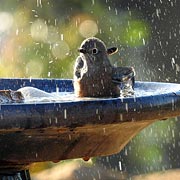 Or place on bird tables if you have them. Ideally, though, feeders should also be protected from attack from above, by birds of prey, so under a building overhang or overhanging tree branch would suit — not too near the ground either, otherwise cats are a potential threat. We’ll follow up in due course with a separate post showing children how to build and site home-made bird feeders — they’re easy, inexpensive and fun!
Or place on bird tables if you have them. Ideally, though, feeders should also be protected from attack from above, by birds of prey, so under a building overhang or overhanging tree branch would suit — not too near the ground either, otherwise cats are a potential threat. We’ll follow up in due course with a separate post showing children how to build and site home-made bird feeders — they’re easy, inexpensive and fun!
Birds also need water to drink and to bathe in. So, some shallow water somewhere will prove popular once the birds have watched it for a few days and seen that it’s safe. A rock or upturned pot base placed into the shallow water will allow birds somewhere safe to land, just like we did above for the bees. Commercial bird baths would work, of course, but if budgets are limited any static, shallow vessel will do. Large pot bases are a good example. Birds do notice when things are moved, though, so wherever it’s sited, it needs to stay put, so they learn to trust it.
Wildlife Will Enrich Your Child’s Life
 Making wildlife-friendly areas will enrich the lives of both the wildlife and children — and their families. Visiting birds, mammals, insects and mini-beasts can teach children so much educationally as well as encouraging a deep respect and empathy towards nature. They can help children grow their understanding of ecological issues and possibly even lean children towards greener lifestyles as they grow up. Witnessing local wildlife in the garden can also feed into children’s creativity, encouraging them to draw, paint, take photos, build things and so on. In time, many of the delightful little visitors may indeed become regular ones that become familiar, friendly faces that come to say hello daily if conditions are right.
Making wildlife-friendly areas will enrich the lives of both the wildlife and children — and their families. Visiting birds, mammals, insects and mini-beasts can teach children so much educationally as well as encouraging a deep respect and empathy towards nature. They can help children grow their understanding of ecological issues and possibly even lean children towards greener lifestyles as they grow up. Witnessing local wildlife in the garden can also feed into children’s creativity, encouraging them to draw, paint, take photos, build things and so on. In time, many of the delightful little visitors may indeed become regular ones that become familiar, friendly faces that come to say hello daily if conditions are right.
Outstanding Weekday Childcare in Willesden, NW10
Are you looking for the best nurseries or pre-schools in Harlesden, Willesden or Kensal Green?
 Ofsted rates Treetops Nursery as a Good in every single category. So, babies, toddlers and under-fives under our care are exceptionally well cared for. We are a nursery and pre-school offering high quality childcare in Willesden, London NW10. We’re also very near Harlesden, Kensal Green and Willesden Green so would be equally suited to those who live or work in those locations. If you’d like to register your child for a childcare place at Treetops Nursery, or would like to visit the setting to see it for yourself, we’d be delighted to welcome you and to answer any questions:
Ofsted rates Treetops Nursery as a Good in every single category. So, babies, toddlers and under-fives under our care are exceptionally well cared for. We are a nursery and pre-school offering high quality childcare in Willesden, London NW10. We’re also very near Harlesden, Kensal Green and Willesden Green so would be equally suited to those who live or work in those locations. If you’d like to register your child for a childcare place at Treetops Nursery, or would like to visit the setting to see it for yourself, we’d be delighted to welcome you and to answer any questions:
Coming Soon:
In our next post, we outline a fun and educational guide to growing flowers to attract bees, butterflies and other beautiful insects to children’s gardens and homes.
Also look out for a wonderful guide to bird feeders that children can make at home — we’ll publish that in late April 2022.


